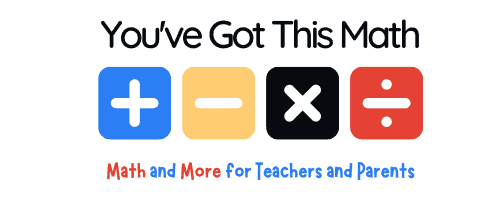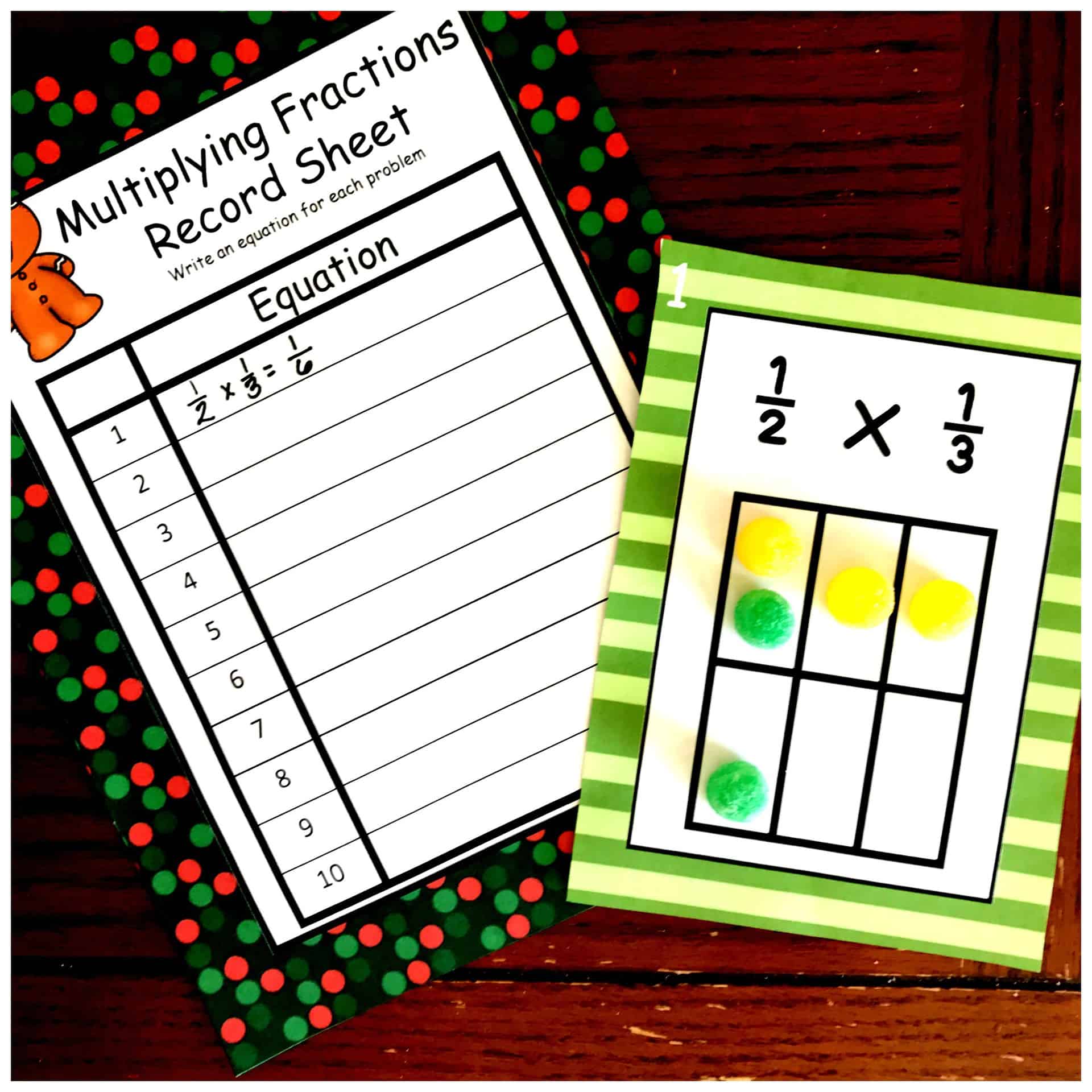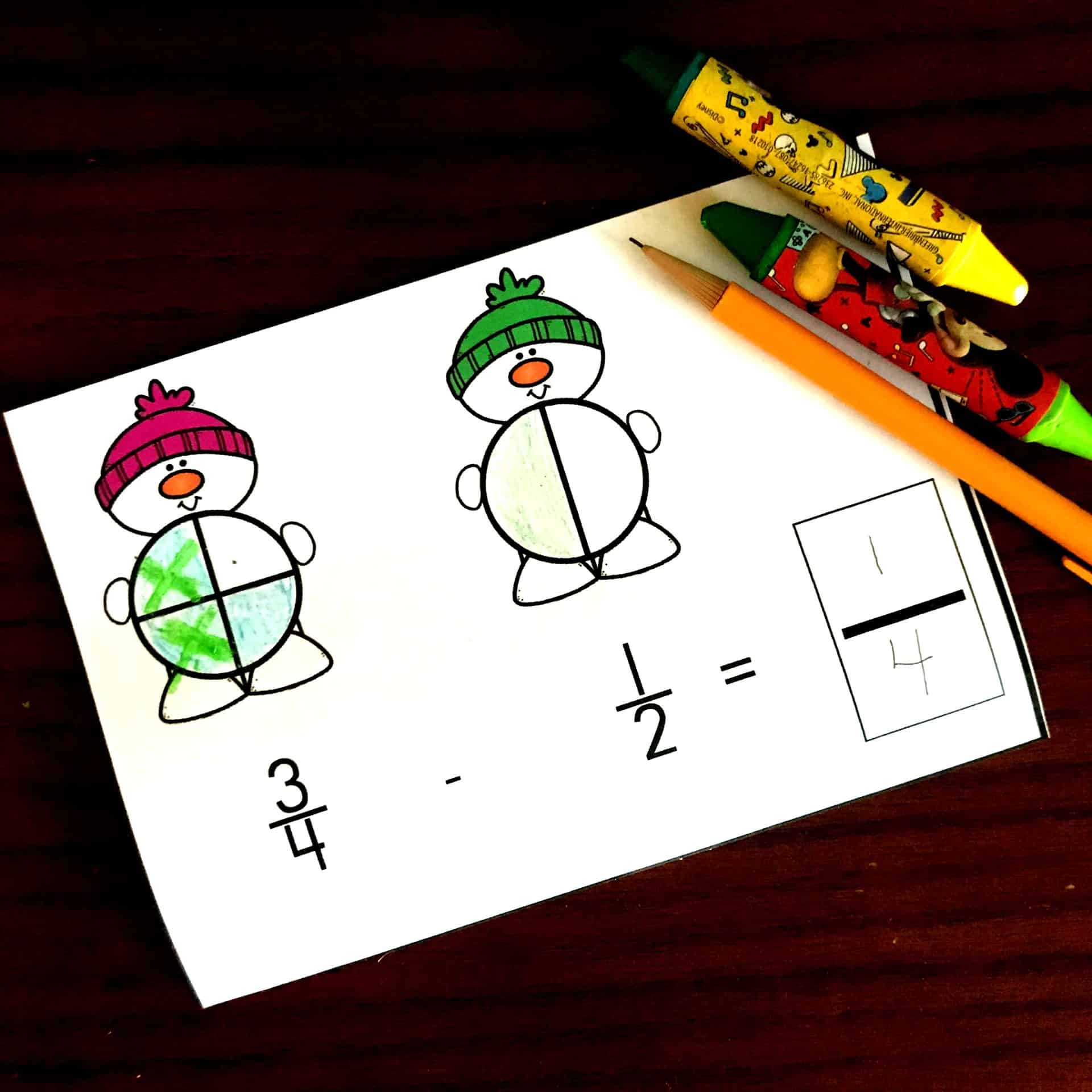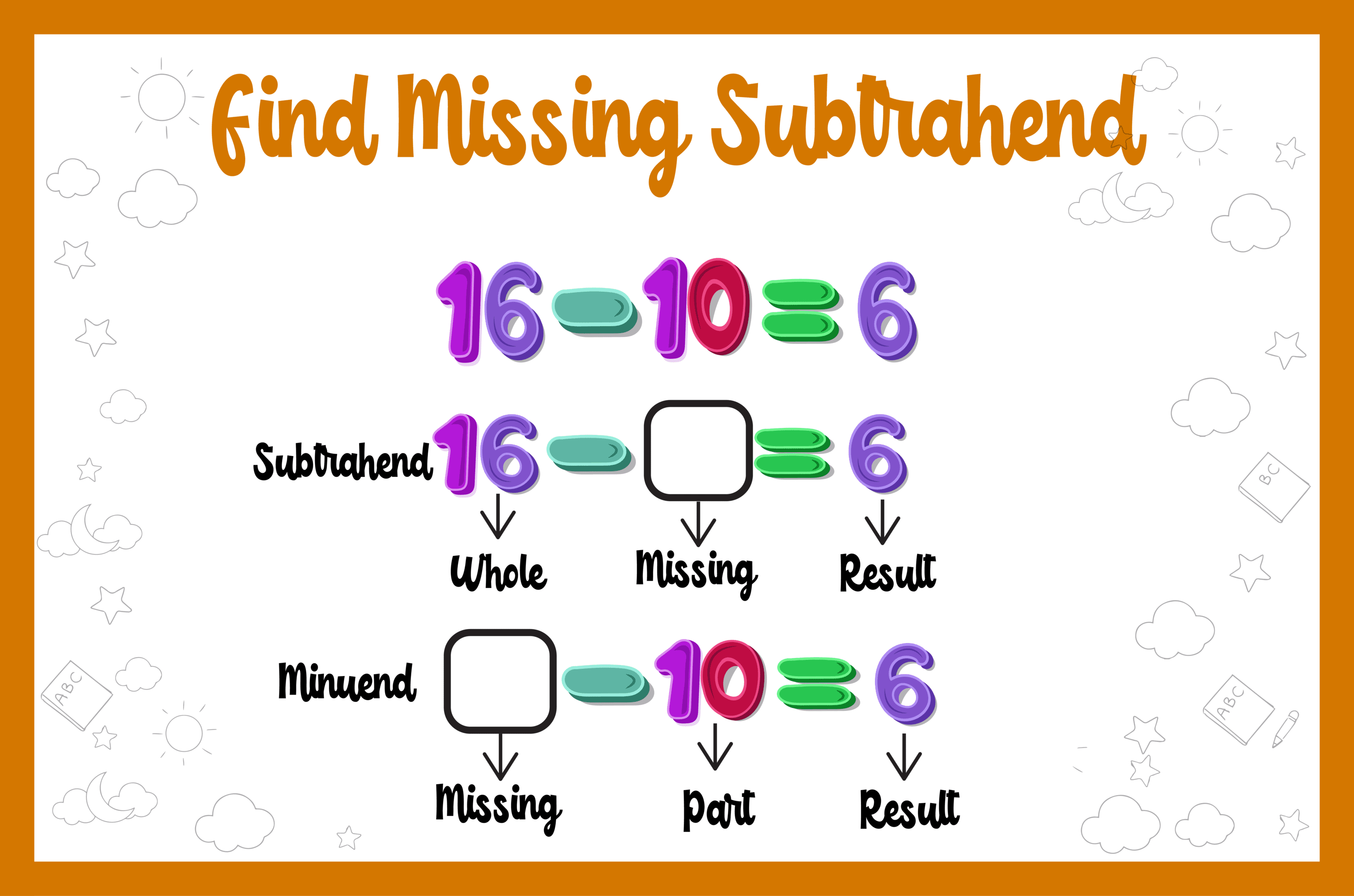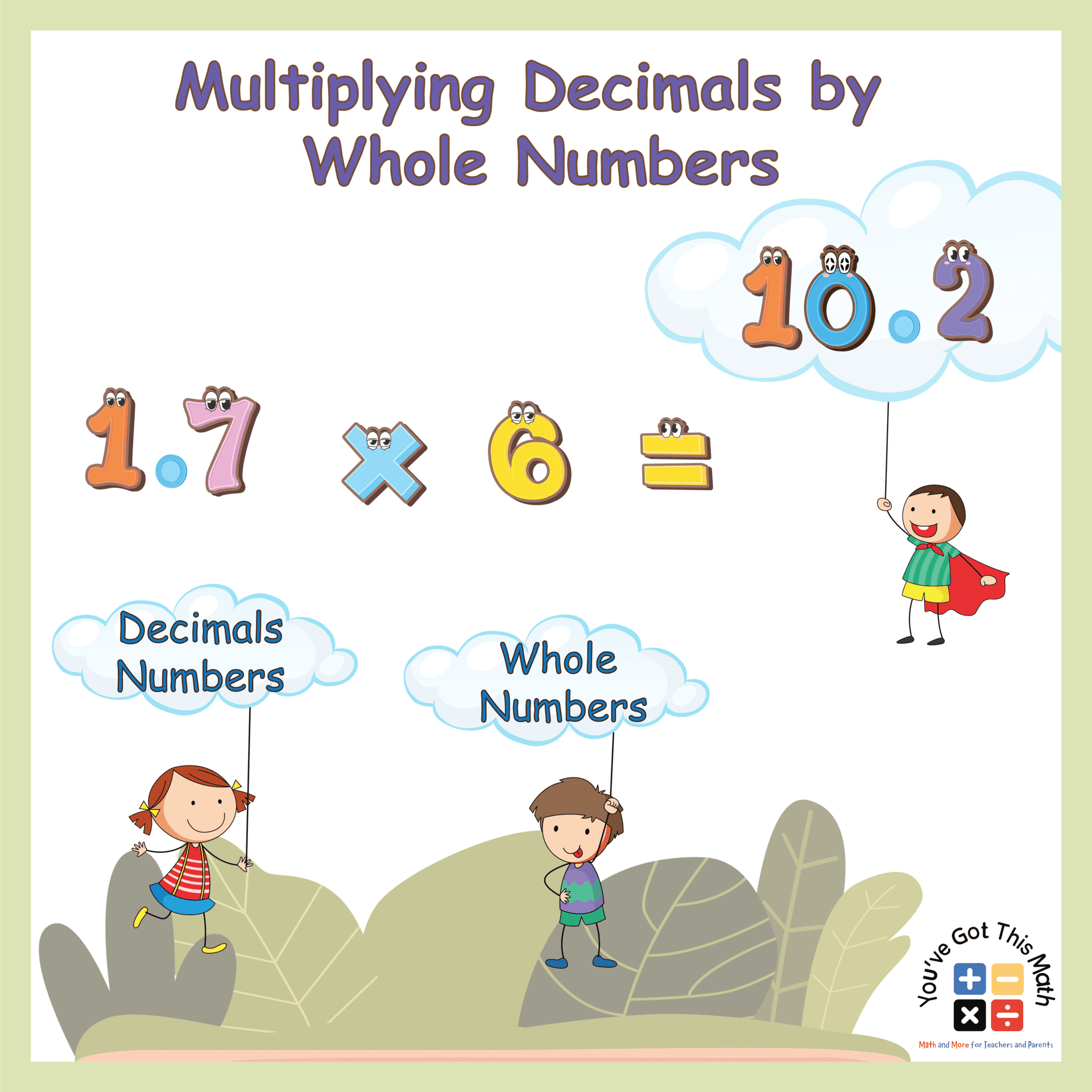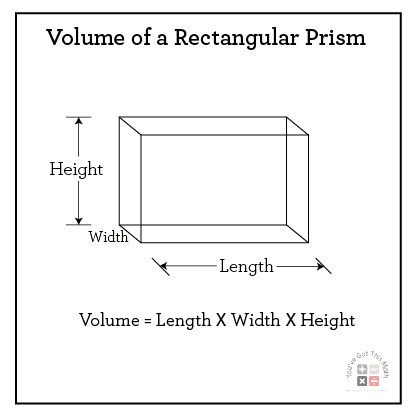Five Fun Activities for Teaching Fractions With Food | PDF
Teaching Fractions with Food
Get 150+ Free Math Worksheets!Teaching fractions with food is a natural way to begin any fraction unit. Kids love (and often require!) a multisensory approach to learning and what better way to do that than with food.
Not only are some common foods conducive to teaching and learning fractions, but food is such a conversation piece. Kids instantly will tell you a story that was triggered by seeing a particular candy bar or smelling an orange.
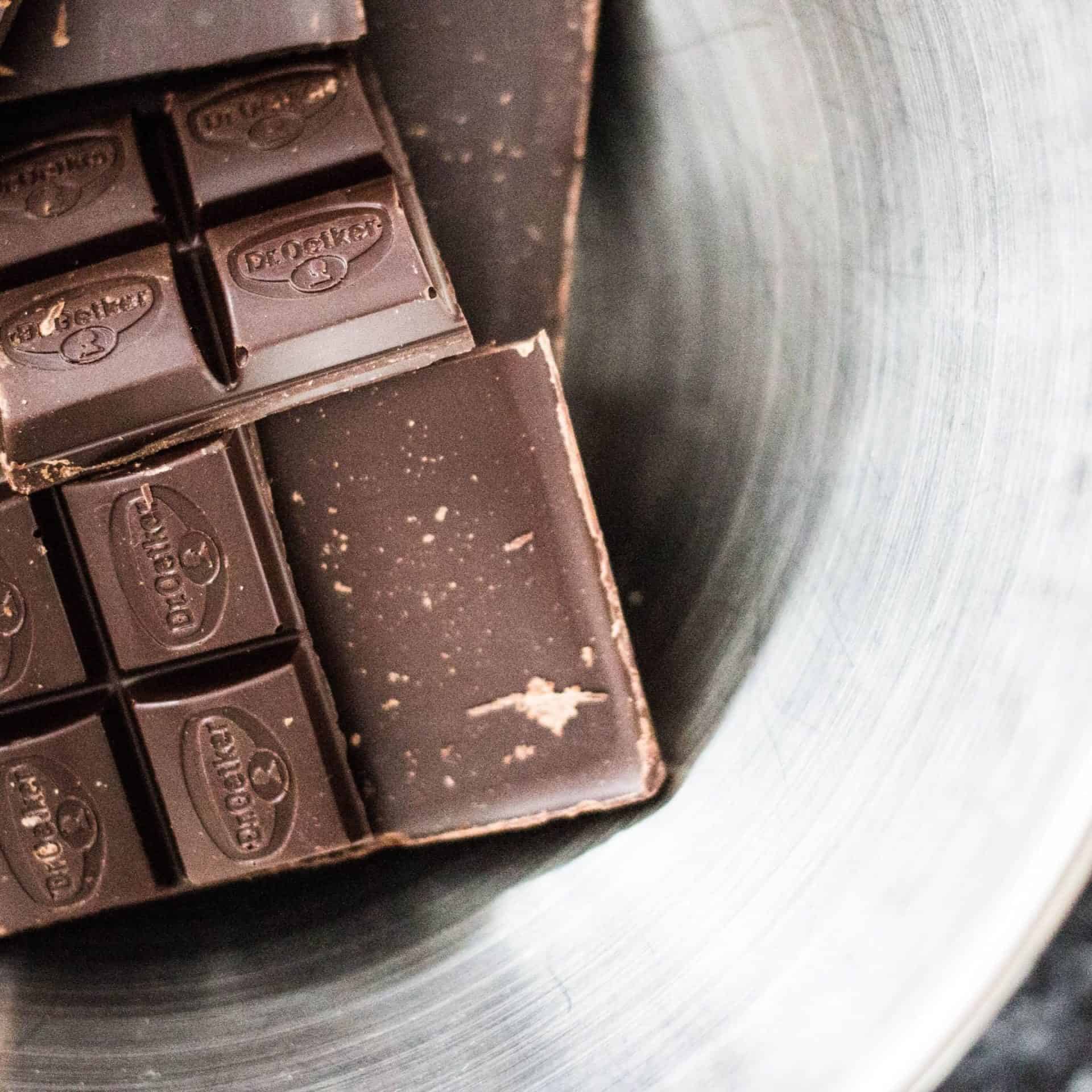
These are my five favorite foods to teach fractions. At the end, I have my free printable worksheets that will also help you introduce equivalent fractions with food.
Once you read this, or share it with your students, I am sure they will come up with more. Asking them for more ideas about Fraction Foods is awesome to encourage creative thinking.
Last week we kicked off our unit with food. There is one thing my boys excel at (actually there is more than one), but they are incredible eaters. They very active, and have appetites to match their movement level.
So…..if we get to have a snack while we learn, I’m a super mom…at least for a few minutes.
Fraction Food Activities
There are many foods that are already divided into equal parts, and using these foods to introduce fractions allows children to begin making connections using their background knowledge.
I created a simple task card printable as a guide for us as we “played” with our food, and we enjoyed working through it and exploring the concept of fractions. Toward the end of our week of introducing fractions with food, I did not use them. Surprisingly I had lots of complaints. I guess we have to follow the routine!!!!
Equivalent Fractions with Food
Prep work for each lesson was very simple. Obviously, you need the food…we will get to that, but I also had the printable ready for my kiddos.
- First, I printed the task cards off on card stock paper.
- Next, I cut them out and laminated them.
- You could punch a hole in them and place a small ring on them to keep them together.
- Provide some dry erase marker and you are ready to go!
Food Fractions
Each day I would hand out the food, and we would identify the whole.
Next, we simply worked on the task cards. The first card asks the student if the food can be divided up equally among two people. Kids know all about sharing, and they understand how important it is that each person gets a fair amount!
As we were “sharing” our food I would consistently reinforce the concept that the denominator tells us how many equal groups there are to make a whole. And the importance that their groups were equal.
With this food, you can see that it was easy to split the Kit Kat into two equal parts. We drew what each part looked like, and wrote that each person would get one out of the two parts….1/2.
Next, we came up with equivalent fractions. For example, it is easy to see that there are two pieces of Kit Kat in each group. We discussed (and I showed them) that an equivalent fraction would be two fourths.
We went through each task card, and if it was an easy way to share that food we would do that task card. The Kit Kat was perfect for sharing with four people, and we even managed to do it with eight people.
With my kiddos being little, we didn’t do the factions that could not be easily divided up. It is difficult to divide a graham cracker into thirds, but not impossible.
If I was working with fifth graders, I may attempt this with them. The thought process will provide helpful as they divide and multiply fractions later on.
What foods are perfect for fractions?
Crackers
This snack is perfect for a large class and is a quick way to introduce 1/2 and its equivalent form 2/4. Obviously, 1/4 is also easily seen.
If asked, I think most kids would prefer graham crackers. But, Saltines or any other cracker that has perforated seams will work.
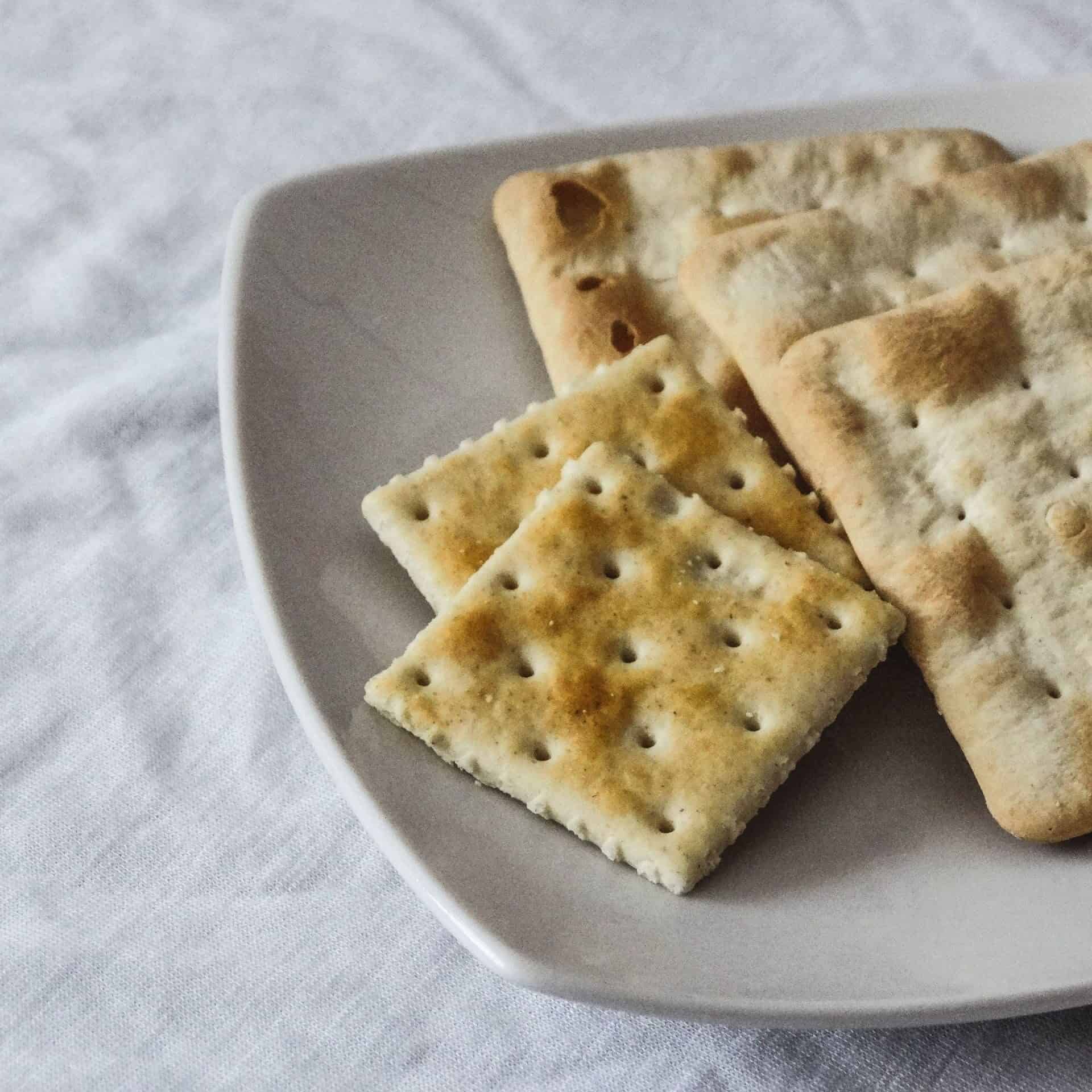
Hershey Bars
This one is my favorite. Not only do they taste great because they are chocolate. But there is an awesome book that will lead the activity for you. I didn’t use the task cards this day. We just went through the book, and the concept of fractions and equivalent fractions is clearly explained.
This was one of my student’s favorite lessons when I taught fourth grade, and it didn’t let me down when I did it with my boys. However, please know that it is out of print (sad face). That’s why it’s a little pricey for a paperback book.
Teachers are super resourceful people though–check your used book sales and such. You never know who might have a copy kicking around. (any coworkers retiring?? they may have an old copy)
We were able to cover 1/2 and its equivalent 3/6. We also worked on 1/3, 1/4, and 1/6 and their equivalents.
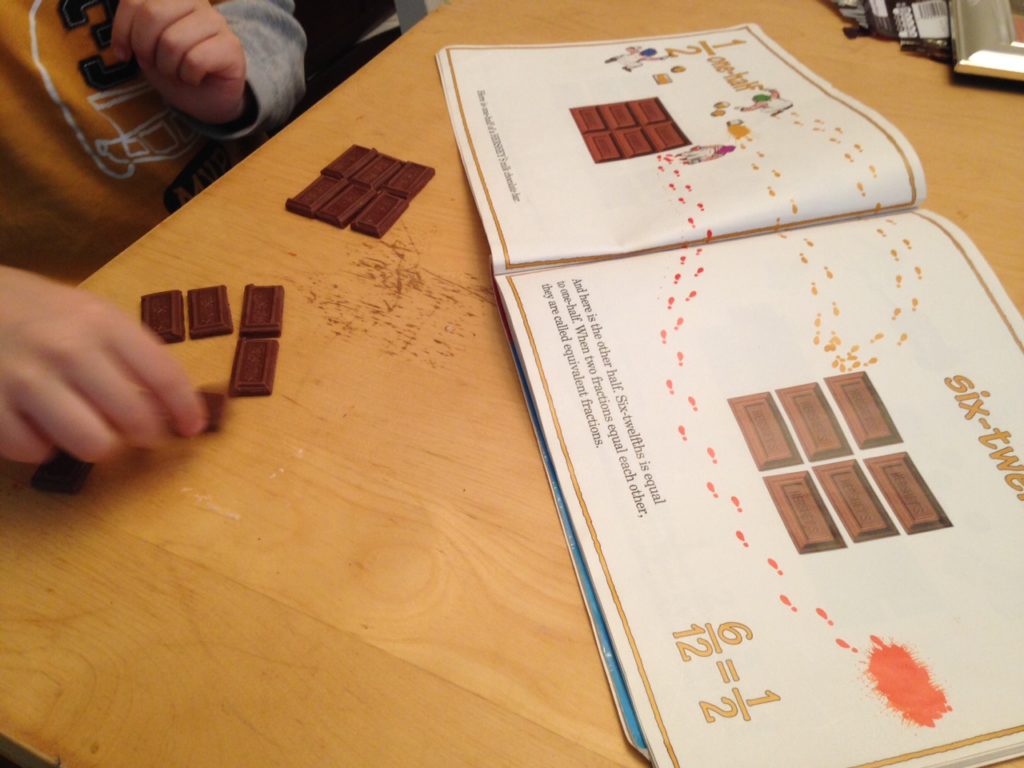
Oranges
Oranges are not the perfect fraction food, but they still work great and are healthy. If you decide to use oranges you will need to discuss that all the slices are not perfectly equal. They are pretty close, and when we found a slice that was very small we just left it with the larger piece. This may be an issue with some rigid thinkers.
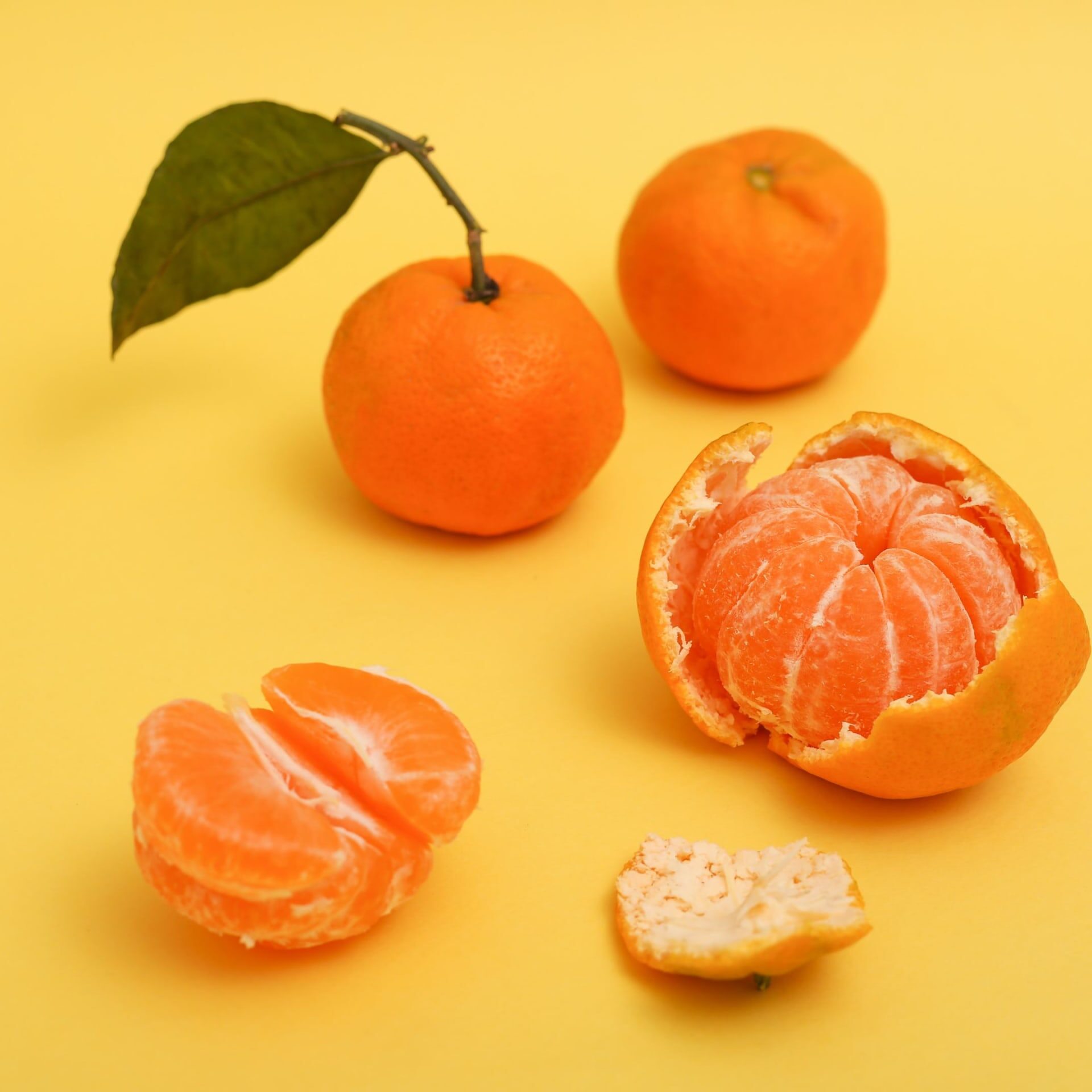
Also, with an orange, you’re not guaranteed an even number or any number of wedges. Both of ours happened to have 9 slices and gave us the chance to use the fractions 1/3 and 3/9.
Kit Kats
These are very similar to graham crackers but show students a different arrangement for making 1/2 and 1/4. You can even try 1/8 with an extra break or if you get some of the giant ones.
Snack Packs of Crackers
I love these because it shows that sometimes a whole isn’t just one piece of food. A whole can be the total amount of any equal thing.
It is also a great introduction to problems such as what is 1/2 of 12. Many times these problems throw children because they only think of fractions in relations to a circle or square cut into pieces.
When we are teaching fractions we need to provide many different samples, and packs of food are great places to start. A small bag of skittles, M & M, or a pack of crackers are just a few great examples.
I like using the crackers because they all have the same amount in them and are not a sweet food. I knew we could hit the fractions 1/2, 1/3 and 1/6.
They gave us a chance to explore equivalent fractions that the Kit Kats and graham crackers had left out.
After we “played” with our food, we would chose one fraction and do our Fraction of the Day printable. It was another way to review what we had covered, but also give them a chance to see the fraction on a number line.
Food Fraction Activities
This will play an important part as we start playing games to reinforce equivalent fractions and the different way you can illustrate them. Don’t miss all the fun stuff I have here on the site and on the TeachersPayTeachers page for teaching equivalent fractions.
You’ve Got This!
